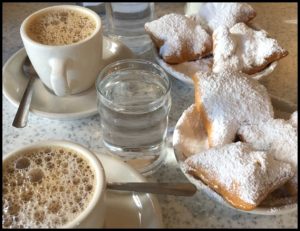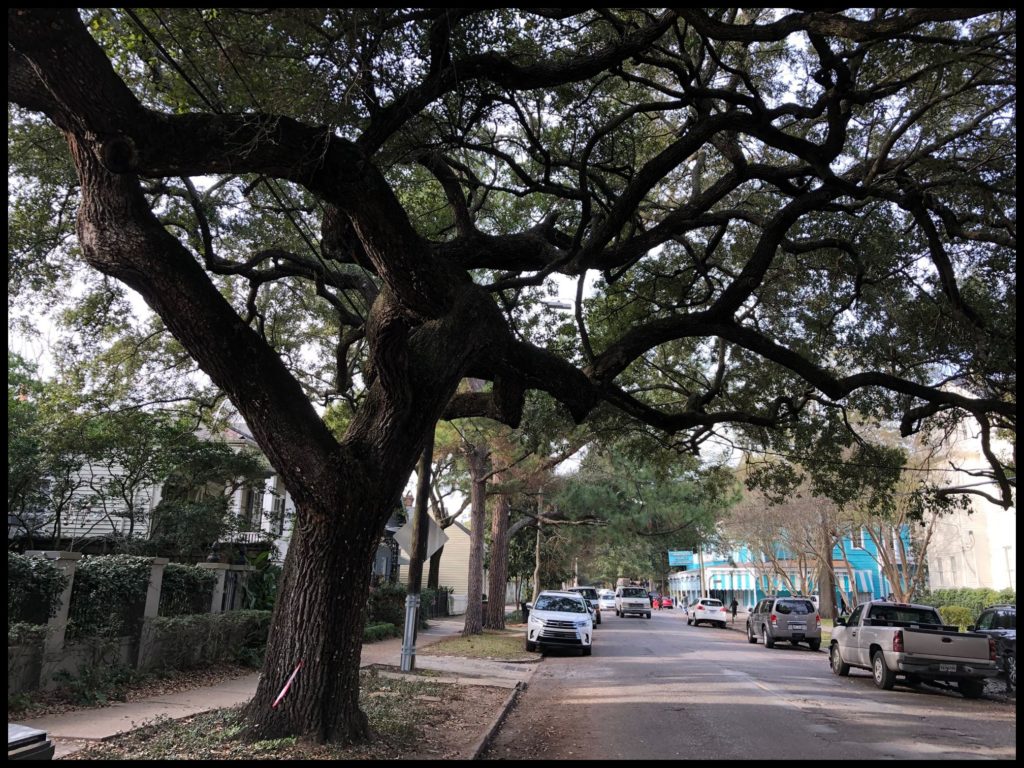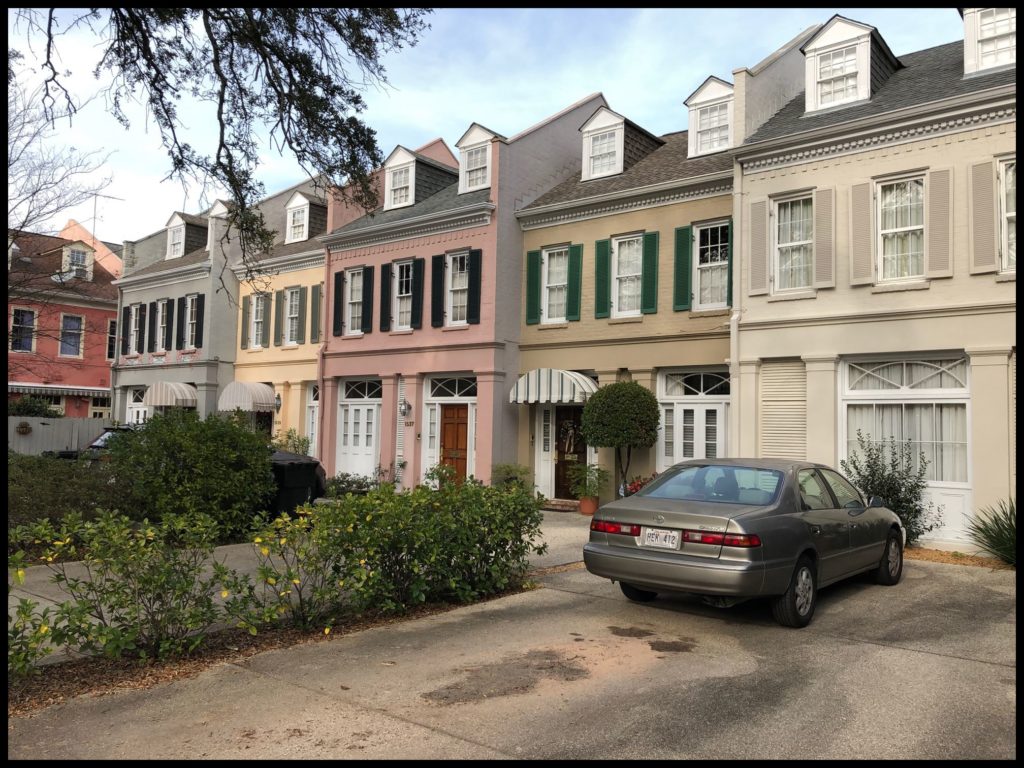So, here we are in the heartland of obesity and diabetes. The adult obesity rate in Louisiana is 36.2%, sixth worst in the country, and the diabetes rate is 13.9%, also one of the worst in the U.S. I have seen many speculations as to why Louisianans are so unhealthy, but the one that struck me is diet. Louisianans love their sugar, as the wife and I learned in our visit to the Bayou State this weekend. While staying in Baton Rouge, we were exposed to our first King Cake, an insanely sweet and delicious confection sprinkled with sugar crystals on top. Today, we stopped to enjoy some chickory coffee and beignets at Cafe Du Monde in New Orleans. How to describe beignets… Let me quote the Food Network: “Start by mixing water, sugar, and yeast in a large bowl” … Pure carbs. I have spent the past few days warding off diabetic shock.
Baton Rouge is best described as a state capital surrounded by miles of suburban sprawl. The sprawl is leavened by the fact that its suburbs are served by a grid road network — we didn’t see any cul de sacs — with the result that our navigation devices gave us about a dozen alternative routes to get from Point A to Point B, and congestion was never an issue. The neighborhoods we drove through, consisting mostly of one-story buildings set upon ample but not excessively large lots, looked quite pleasant.
New Orleans, of course, is the dominant city in Louisiana, and it has far more history, more character, and more deeply engraved flaws than Baton Rouge. The wife and I had last visited the city about 20 years ago, spending most of our time in the French Quarter. This time we ventured to the Garden District, which was developed mainly in the second half of the 19th century. The density of development is comparable to that of the Fan neighborhood in Richmond; the main difference is that the district is served by a trolley running down Saint Charles Street. There are enough boutiques, offices and restaurants on select streets that one could legitimately refer to the neighborhood as “walkable urbanism.”
An advantage of being an old neighborhood is that the trees are old, and old trees have character. The Garden District of New Orleans is blessed with magnificent live oaks that spread their branches wide and create a wonderful street canopy. The picture above shows a scene on Washington Street. Whatever else Hurricane Katrina may have destroyed, it didn’t knock down these marvelous trees.
Lesson to other cities: Don’t plant junk trees that grow fast and get knocked down easily. Plan for the long run. Plant trees that grow old with dignity.
One more observation, and this is an oddity. I came across the vignette, displayed above, of five townhouses on Washington Street set back from the street. The space that normally would be dedicated to front yards had been converted into cement driveways. Normally, I would consider this an anathema. Cars and utilities and cement should be relegated to the back of the building. Strangely enough, though, I found the scene alluring. The driveways were separated by greenery, and the facades of the five townhouses were attractive. The cardinal rule in maintaining walkable urbanism is to maintain visual interest throughout, and this stretch of houses somehow managed to do that. The arrangement struck me as a reasonable compromise between walkable urbanism and the demands of an autocentric society. I mention it only because I do not recall ever seeing anything like this before. Experimentation is a good thing. You never know what works unless you try it.




Leave a Reply
You must be logged in to post a comment.